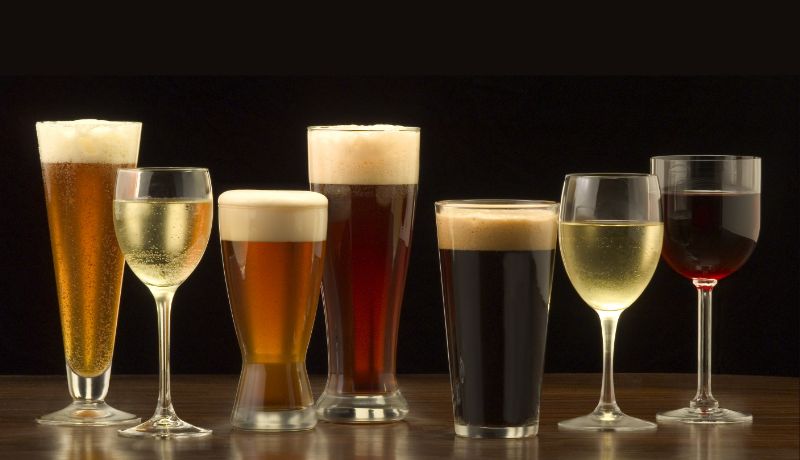Alcohol consumption is one of the “major modifiable risk factors” for the disease, the WHO said during previous Breast Cancer Awareness Month, an annual campaign to raise awareness about the impact of breast cancer. “It doesn’t matter what type, quality, or price of alcohol.”
Globally, more than two million instances of breast cancer were estimated in 2020, with the WHO estimating that around 100,000 of them were caused by alcohol intake.
According to the same data, breast cancer has become the most common cancer worldwide.
“People need to know that by reducing alcohol consumption they can reduce their risk of getting cancer,” says Dr. Marilys Corbex, a senior technical officer on noncommunicable diseases, WHO/Europe.
“Simply put, alcohol is toxic. It harms every organ while it passes through the body”, said Dr. Carina Ferreira Borges, acting director for Noncommunicable Diseases and Programme Manager for Alcohol and Illicit Drugs at WHO/Europe.
“So, it makes perfect sense to limit the amount of consumed alcohol, to find ways to replace alcohol with other beverages, and to adopt nationwide policies that help to reduce alcohol consumption.”
About Breast Cancer
Breast cancer is caused when the DNA in breast cells mutate or change, disabling specific functions that control cell growth and division. In many cases, these mutated cells die or are attacked by the immune system. But some cells escape the immune system and grow unchecked, forming a tumour in the breast.
Excess body fat increases the estrogen levels in a woman’s body and hence increases the risk of getting breast cancer. Estrogen makes hormone-receptor-positive that in turn helps breast cancers to develop and grow. Even increased insulin levels in obese women have been linked to breast cancer. Moreover, increased plasma cholesterol in obese women leads to accelerated tumour formation. Obesity also leads to chronic low-level inflammation – a process by which the body’s immune function malfunctions and causes DNA damage and leads to breast cancer.
Europe has the highest rate
The WHO European Region, which comprises 53 counties, has the highest rate of new breast cancer diagnoses compared to any of its other regions.
The International Agency for Research on Cancer (IARC) said in 2020 that alcohol consumption was responsible for almost 40,000 new breast cancer cases in Europe. The health body says breast cancer is the most frequently diagnosed cancer type in the WHO European Region, with 1,579 women diagnosed with breast cancer every day, and estimates that alcohol causes seven of every 100 new breast cancer cases in the European region.
The Pink Ribbon
The pink ribbon is an international symbol of breast cancer awareness. Pink ribbons identify the wearer or promoter with the breast cancer brand and express moral support for women with breast cancer. Pink ribbons are most commonly seen during National Breast Cancer Awareness Month.
Alcohol Intake in Nigeria – a worrying state
In most parts of Nigeria, there’s very little control over the sale and distribution of alcohol. It’s available in small and portable packaging and people of any age can buy it’s not uncommon for bars to be situated near schools.
According to the World Health Organisation, Nigeria ranks second on the list of African countries for heavy episodic drinking. Before the arrival of western factory-made drinks, alcohol consumption was limited to a variety of beverages produced from palm trees and food grains. Today, beer has become the most popular drink in the country but traditional beverages (palm wine, burukutu, ogogoro, pito) are still widely consumed in both rural and urban areas.
A worrying statistic showed that in 2016, Nigeria Bureau of Statistics disclosed that the South East with N44 billion, the South West with N37 billion, the North-central with N30 billion, and the North-east with N19.6 billion follow in that sequence of alcohol consumers in the country. However, in terms of the rural-urban divide, federal statisticians say there are way more drinkers in Nigeria’s rural communities than in the urban areas. Rural communities spent N125 billion naira on alcohol consumption, whilst the urban spend N82.5 billion naira.
According to the International Agency for Research on Cancer (IARC), one of every 10 cancer cases in Nigeria can be traced to alcohol, and 4.7 per cent of overall cancer cases in Nigeria last year can be attributed to alcohol.
In its Global Status Report on Alcohol and Health, the WHO also estimates that in 2016 more than three million people died all over the world as a result of the harmful use of alcohol. This represents 1 in 20 deaths. Men accounted for more than three-quarters of these deaths. Overall, the harmful use of alcohol causes more than five per cent of the global disease burden.
Breast cancer among females in Nigeria last year, amongst other cancers was 38.7% which was the highest.
Prevention
Alcohol is classified as a group one human carcinogen by the International Agency for Research on Cancer (IARC), linked to seven types of cancer including Breast, Oral cavity, Pharynx, Oesophagus, Liver, Larynx, and Colorectum.
The WHO also recommends that countries make alcohol less affordable (for example increasing taxes), ban or restrict alcohol marketing across the media, place health warnings on alcoholic beverages and reduce the availability of alcohol (i.e. regulating sale hours). Women have been advised to try to eat a lot of fruits and vegetables and keep alcohol at moderate levels or lower (a drink a day or under).
